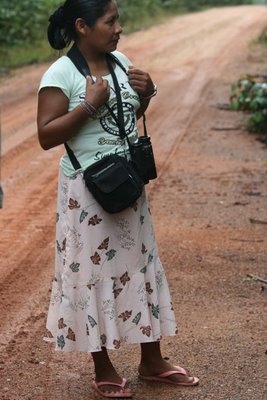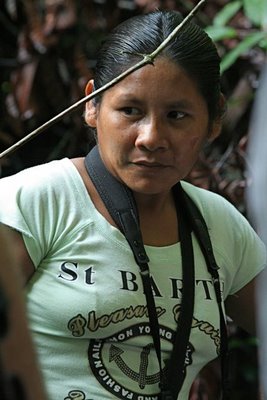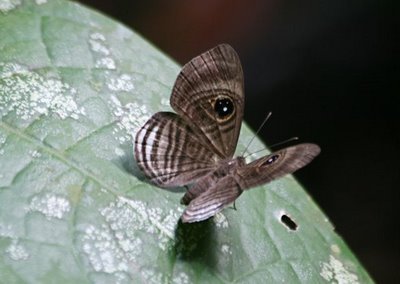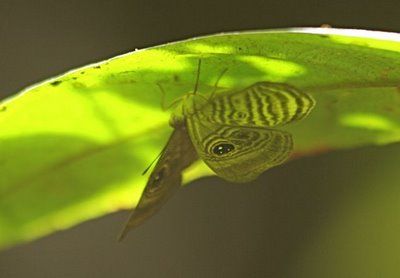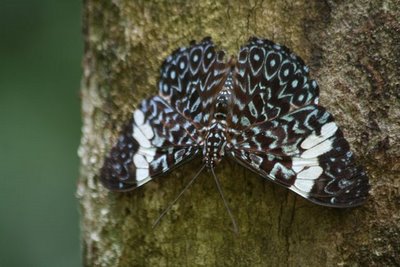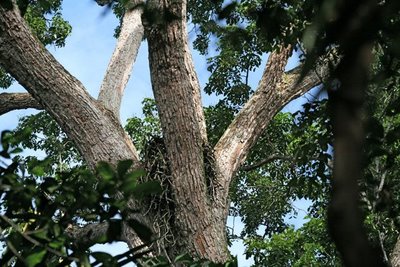Harpy Eagle: Nightmare on Wings
We were looking for Harpia harpyja, perhaps the largest eagle in the world, rivaled only by the Philippine (monkey-eating) eagle, a species that someone I love very much is trying, hiking, stumbling to see as you read this. Kind of romantic...we have both searched for the world's largest eagles on opposite sides of the world. It's romantic until you realize that we have to be apart an awful lot to do that.
These mega-eagles take large prey--monkeys, small deer, opossums, coatis--and can flip upside down in flight and rip a sloth right off its perch. If you've ever tried to remove a sloth from something it's hanging on to, you know how strong they are. Harpy eagles are stupefyingly powerful. In Greek mythology, the harpies were those horrid winged women with their breasts hanging out who swooped down to take you to the underworld. Shudder. I like it when mythology and taxonomy collide; it makes for colorful names.
To give you an idea just how big this bird is, here is Neil Rettig, filmmaker, falconer and arguably the world's authority on the species, holding a captive bird. Rettig was the first person to make a study of them at the nest, building and living in scaffolding, and producing unforgettable photographs and film of their family life for National Geographic. What an honor it was to meet him and his glorious eagle, in Davenport, no less!
I shot these photos at the Midwest Birding Symposium in Davenport, Iowa in October 2005. Get a load of those talons; compare them with Neil's fingers. Note that he has to support his arm with its heavy leather gauntlet to keep this enormous bird comfortable (and keep his arm from falling off). This bird can weigh 14-20 pounds (Chet Baker weighs 24 pounds).
The harpy's rounded wings (see, no primaries extend from beneath the broad secondaries) help it maneuver in tight spaces, much as do those of the accipiters, only on a huge scale. The long, heavy tail is a good rudder for fast turns. A harpy's feet are almost cartoonish; I remember thinking that the first time I saw one perched along Brazil's TransAmazon Highway in 1979. They looked as though they'd been inflated. The better to squeeze a wooly monkey, my dear. I cannot imagine trusting one with my right arm, even through a leather gauntlet. (Says the woman who handed a giant Amazon otter a chance to crush her wrist...)
I have been reading some excellent books on falconry lately, by Rachel Dickinson (Falconer on the Edge) and Tim Gallagher (Falcon Fever). I wish I had read them before I met Neil. I would have asked him where he takes this bird to fly it; what kind of prey they look for. Woodchucks? Rabbits? Egad.
People get rather complacent around birds of prey when they are sitting calmly on a handler's arm. When the harpy suddenly sleeked and focused, I automatically followed its gaze to see what had interested it, and was horrified, at the receiving end of that laser glare, to see a wriggling infant being wheeled into the auditorium in a stroller. Nothing escapes an eagle's attention; it may be above acknowledging most things, but you can be sure it noticed. I don't think anyone in the room but Neil and yer blogger caught what was going down in the eagle's brain...I could read its thoughts. Good thing the baby's parents couldn't.
Right prey size class, check, defenseless, check, very manageable, check, big sturdy rafters I could bear it away to, check...keep your hand on those jesses, Neil. And, knowing his harpy and certainly needing no input from me, he had already tightened his grip.
I would not bring a poodle into this auditorium. And I would want to know when Neil was flying his harpy eagle, and leave Chet Baker home.
Next: Looking for the Wild Harpy
Labels: eagles carrying babies, falconry, Harpia harpyja, harpy eagle, harpy eagle adaptations, Neil Rettig

